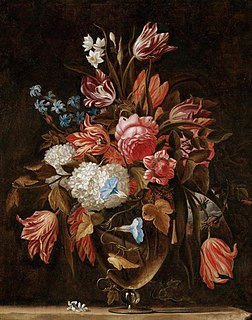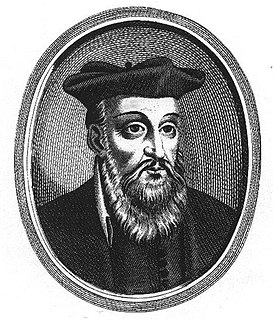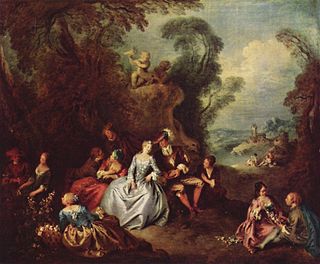 W
WCharles d'Agar (1669–1723), was a French painter.
 W
WJacques d'Agar was a French portrait painter born in Paris. He was a pupil of Jacob Ferdinand Voet. He began his career as an history painter, but he soon abandoned history for portraiture, in which branch of art he became very successful.
 W
WBenoît Alhoste was a French painter of the 17th century. Likely born in Marsonnas around 1620, he died in Bourg-en-Bresse in 1677. The musée de Brou in Bourg-en-Bresse contains four of his paintings, taken from that city's Convent of the Visitation.
 W
WPierre Allais was a French painter and pastel artist.
 W
WÉtienne Allegrain was a French topographical painter. Inspired by Nicolas Poussin, he evoked still ambiences and atmospherics bathed in a deep play of light and shade.
 W
WJean André was a French artist.
 W
WPeter Angelis, variously recorded as Pieter Angellis, Pieter Anchillus, Pieter van Angellis or Pieter Angelles, was a painter active in Flanders, Germany, Italy, England and France.
 W
WClaude Audran III was a French painter.
 W
WJacques Autreau, a French portrait painter and dramatic poet, was born in Paris in 1657. He died in 1745. His portrait of himself is in the Musée of Versailles.
 W
WNicolas Baudesson, a French flower painter, was born in Troyes in 1611, and was admitted into the Académie royale de peinture et de sculpture on May 26, 1671. He died at Paris in 1680, leaving a son, Jean François Baudesson, born in Paris in 1640, who was also a painter of flowers and fruit. The younger Baudesson became a member of the Academy in 1689, and died in Paris in 1713. Much of his work is in the Château de Versailles.
 W
WJean-Baptiste Belin de Fontenay I (1653–1715), also called ‘Jean-Baptiste Belin the Elder’, was a French painter who specialized in flowers.
 W
WSamuel Bernard, also known as Jacques-Samuel Bernard was a French miniature painter and engraver.
 W
WGabriel Blanchard, known as Blanchard Le Neveu, the only son of Jacques Blanchard, was born in Paris in 1630, and studied under his uncle, Jean Baptiste Blanchard. He was, in 1668, elected Academician on the merits of an allegorical painting of the 'Birth of Louis XIV,' now at Versailles; but his most successful work was a picture of 'St. Andrew,' which he painted for the Goldsmiths' Guild. He became keeper of the royal collection, and successively assistant professor, professor, and, in 1699, treasurer of the Academy. He died in 1704. Two of his sons, Nicolas and Philippe Thomas, were likewise painters.
 W
WMarie Blancour, was a 17th-century French painter.
 W
WHenri Bonnart, a French painter and engraver, was the brother of Robert, Jean Baptiste, and Nicolas Bonnart. He was born in Paris in 1642, became rector of the Academy of St. Luke, and died in Paris in 1711. Le Blanc attributes to him 201 plates, of which 20 are religious subjects, 46 portraits, and 1S5 costume prints. His son, Jean Baptiste Henri Bonnart, followed his father's profession, and died in 1726, aged about 48 years. In Perrault's 'Cabinet des Beaux- Arts,' published in Paris in 1690, there is a plate of a ceiling ornamented with figures, which is probably by him; it is etched in a free, masterly style, finished with the graver, and marked Jean Bonnart, Junior, del. et sculpt.
 W
WFrançois Bonnemer was a French painter and engraver who was born at Falaise in 1637. He worked with Monier, the younger Corneille, and the younger Vouet on the ceiling of the gallery of the King's Audience Chamber at the Tuileries, and was commissioned by the king to copy some works of Carracci in the Farnese Gallery at Rome. He engraved several plates after Le Brun, and was the master of Ménageot. He died in Paris in 1689.
 W
WJean Boulanger (1606–1660) was a French painter active in Italy during the Baroque period.
 W
WPierre Bourguignon (1630–1698) was a French Baroque painter.
 W
WAndré Bouys, a French portrait painter and mezzotint engraver, was born at Hyères about the year 1656. He studied under François de Troy, and acquired sufficient reputation to gain admission into the Academy in 1688, when he presented a portrait of the painter Charles de La Fosse, now at Versailles, where there are likewise two portraits of himself, one of them representing also his first wife. He died in Paris in 1740, having engraved several portraits, among which are the following:Andre Bonys and his first Wife. Francois de Troy, painter. Claude Gros, de Boze; And. Boys pinx. ad vivum. 1708. François Rene, Marquis de Bellay; Boys pinx. Jean Baptiste Massillon, Bishop of Clermont; Boys fec. Marin Marais, famous musician. (pictured)
 W
WAntoine Bouzonnet-Stella was a French painter and printmaker, a pupil and nephew of Jacques Stella.
 W
WLouis Caravaque was a French portrait painter who worked in Russia.
 W
WPierre-Jacques Cazes was a French historical painter. He is also known as a teacher of artists, including Chardin.
 W
WClaude Charles (1661–1747) was a French historical and decorative painter.
 W
WLouis de Chastillon (c.1639–1734) was a French painter in enamel and miniature, and an engraver.
 W
WLouis Chéron was a French painter, illustrator and art tutor.
 W
WHyacinthe Collin de Vermont was a French painter.
 W
WJacques François Courtin was a French painter who was particularly adept at translating genre scenes based on Dutch Golden Age examples into a contemporary setting through the use of staging and costume. He was one of the most popular genre painters of the late 17th and early 18th centuries.
 W
WNoël-Nicolas Coypel was a popular French artist.
 W
WJean Daret (1613–1668) was a Flemish artist.
 W
WAntoine Dieu, a French painter, born in Paris about 1661, was a son of Edouard Dieu, an engraver, who died in Paris in 1703. He was instructed by Lebrun, and painted historical subjects and portraits in the style of his master, and not without merit. The 'Duke of Burgundy before the King,' and the 'Marriage of the Duke of Burgundy,' are in the Museum at Versailles, but his best work is the portrait of 'Louis XIV. on his Throne,' which was engraved by Nicolas Arnoult. He was received at the Academy in 1722, and died in Paris in 1727. His brothers, Jean Dieu and Jean Baptiste Dieu, were engravers; the former was born about 1658, and died in Paris in 1714.
 W
WCatherine Duchemin was a French flower and fruit painter.
 W
WJacques Vigouroux Duplessis, also Jacques Vigoureux-Duplessis (c.1680–1732) was a French painter. He was active from 1699 to 1730, and is mainly known for his Rococo Chinoiserie or Orientalist paintings, and decorative objects and scenes.
 W
WMatheiu Elias, Elyas, or Elie, was born at Peena, near Cassel, in 1658. His parents were extremely poor, and he was employed when a boy in attending cattle, in which humble situation he was noticed by a painter of Dunkirk, named Philippe De Corbehem, tracing objects on the ground. The artist, struck with the singularity of the circumstance and the evident disposition of the boy, prevailed on his mother to entrust him to his care. After instructing him for some time he sent him to Paris for improvement, where he met with employment, and resided several years. On the death of De Corbehem, he settled at Dunkirk, and painted some altar-pieces for the churches in that town and its neighbourhood. He died at Dunkirk in 1741.
 W
WPierre Ernou, known as "le chevalier Ernou", was a French painter. He was born in Angers in 1685 and died in 1739. Little is known of his life, save that he was the son of the patiner Jean Ernou, and that he passed much of his career in the French provinces. He is known, however, to have been in Paris and in Lyon at points during his career.
 W
WJean Charles Flipart (1682–1751) was a French engraver. He was born in Paris, his sons Charles Joseph and Jean Jacques Flipart were engravers and the former, also a painter. Among his plates are:Portrait of René Choppin ; after Janet. Virgin and Infaut ; after Raphael. La Sainte Vierge by Jean Charles FlipartChrist praying on the Mount of Olives ; after the same. Penitent Magdalen ; after Charles Le Brun. Apollo and Daphne ; after R. Houasse.
 W
WJacques Foucquet was a French artist primarily active in Sweden.
 W
WClaude Gillot was a French painter, print-maker and illustrator, best known as the master of Watteau and Lancret.
 W
WLouis or Lewis Goupy was a French painter, portraitist and miniaturist, who studied under Bernard Lens and was active in London by 1710 alongside his brother Charles Goupy. From 1710 to 1733 he lived in King Street, Covent Garden. He subscribed in 1711 to the Great Queen Street Academy begun under Sir Godfrey Kneller, but seceded from it in 1720 to the St Martin's Lane Academy begun by Louis Chéron and John Vanderbank. One of his patrons was Richard Boyle, 3rd Earl of Burlington, who on the return leg of his Grand Tour from Italy in 1715 was accompanied by Goupy. His students included his nephew Joseph Goupy. Goupy died in London.
 W
WMichel Ange Houasse was a French painter, most of whose career was spent at the court of Philip V of Spain, who summoned him to the court in Madrid in 1715 whilst he was still Philip of Anjou. Michel Ange produced many portraits of the Spanish royal family, including ones of the future king Louis I. He introduced Spain to mythological and rural scenes he had learned from Flemish Baroque art. His taste for pastoral and bucolic genre scenes resulted in paintings such as Blind man's buff, clearly influenced by Watteau and itself a clear influence on Goya's oil on linen cartoon of the same name. In his later years he came into friction over works for the royal court with his fellow French artist Jean Ranc.
 W
WJacques de Lajoue, a French architectural painter, was born in 1687. He became a member of the Academy in 1721, and is noticed for a 'Perspective' which he executed in 1732 at the Library of St. Geneviève. He also designed the title-page to the works of Wouwerman. Etchings have been made after him by Cochin, Tardieu, and others. He died in Paris in 1761.
 W
WPierre-Antoine Lemoine was a French painter known for still lifes. He died in Paris. His Still Life with Bunches of Grapes, Figs, and Pomegranates shows Italian influence, and may have been exhibited for the Academy in 1654.
 W
WJean Monier was a French painter. He was born and died in Blois.
 W
WPierre Montallier was a French painter. He died in Paris. His most famous artwork is Works of Mercy.
 W
WJean Nicolle was a French Norman painter.
 W
WMarie–Marguerite Oudry, née Froissé (1688–1780) was a French engraver and painter.
 W
WCharles Parrocel was a French painter and engraver and a specialist in battle and hunt paintings.
 W
WPierre Patel was a French painter.
 W
WPierre-Antoine Patel, also known as Patel the Younger, was a French landscape painter. He was the son of Pierre Patel, also a renowned landscape painter, who, like many French painters of his generation, was influenced by the landscapes of Italy painted by Claude Lorrain. The younger Patel distinguished himself from his father by specializing in small, finely finished landscapes in gouache, an opaque watercolor. The majority of his works depict antique ruins, bathed in sunlight.
 W
WJean-Baptiste Pater was a French rococo painter.
 W
WGabriel Revel was a French painter.
 W
WGaspard Rigaud was a French painter and portraitist. He was born in Perpignan, the younger brother of the portraitist Hyacinthe Rigaud. Gaspard's daughter married Hyacinthe's pupil Jean Ranc. Gaspard Rigaud died in Paris.
 W
WJacques des Rousseaux, was a French Baroque painter active in Leiden.
 W
WDaniel Sarrabat (1666–1748) was a French painter.
 W
WAlexandre Ubeleski was a French painter. Ubeleski was born in Paris in 1649. He was a pupil of Charles Lebrun, and completed his studies in Rome, where he became a member of the Academy, and where he painted the dome of a chapel in Santa Maria in Transpontina.
 W
WJoseph Vivien was a French painter from Lyon.
 W
WZacharie Heince was a well known French painter and engraver of Swiss origin. He drew portraits of the plenipotentiaries negotiating the peace of Münster engraved by F. Bignon, and the Illustrious Frenchmen Painted in the Gallery of the Palais Richelieu.